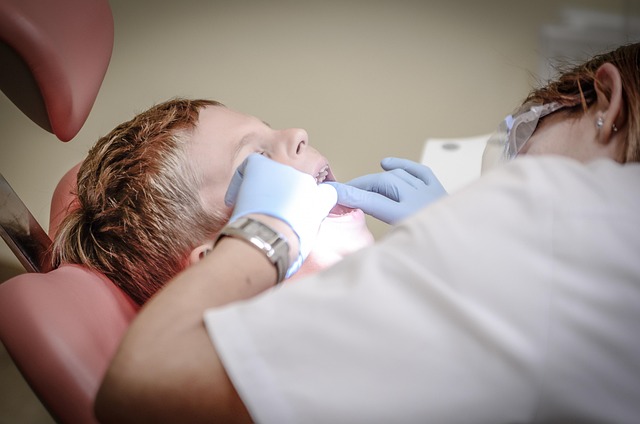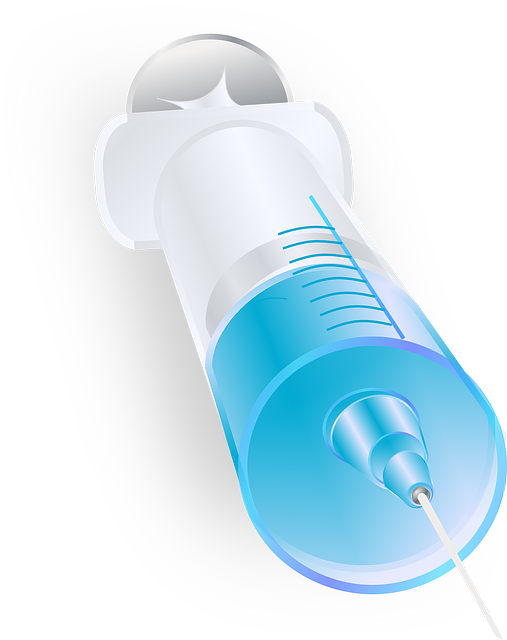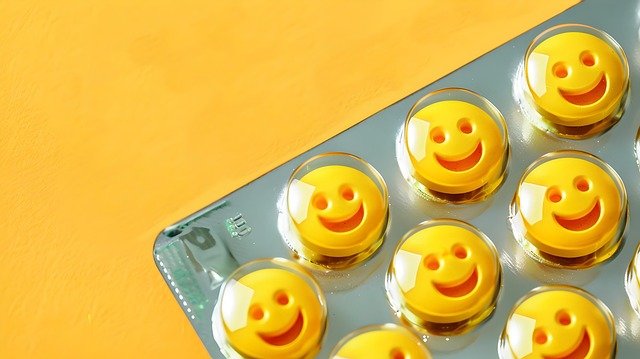Anxiety disorders, including GAD, panic disorder, social anxiety, and phobias, are characterized by excessive fear and worry impacting daily life. Diagnosis involves comprehensive evaluations by mental health professionals. Early diagnosis is crucial for effective anxiety treatment. Personalized combinations of anxiety treatment methods, such as psychotherapy, medication, or both, are employed. Key approaches include Cognitive Behavioral Therapy (CBT), exposure therapy, Mindfulness-Based Therapies, and lifestyle changes like exercise and healthy habits. CBT empowers individuals to challenge negative thought patterns; exposure therapy gradually confronts fears; mindfulness practices focus on present-moment awareness; and medication targets specific neurotransmitters for symptom relief. Group therapy and support networks also play vital roles in anxiety treatment. Long-term success requires integrating these strategies into daily life.
Anxiety disorders are a prevalent mental health concern, affecting millions worldwide. If you’re seeking effective anxiety treatment, this comprehensive guide is your roadmap. We’ll explore various therapies, from cognitive behavioral therapy (CBT) and exposure therapy to mindfulness practices and medication management. Discover lifestyle changes, group support, and long-term strategies to overcome anxiety and regain control of your life.
Understanding Anxiety Disorders: Symptoms and Diagnosis

Anxiety disorders are a group of mental health conditions characterized by excessive and persistent fear, worry, or anxiety that interferes with daily living. They include generalized anxiety disorder (GAD), panic disorder, social anxiety disorder, and specific phobias, among others. Understanding these disorders involves recognizing their varied symptoms, which can range from restlessness and irritability to physical manifestations like increased heart rate, insomnia, and muscle tension.
Diagnosis typically involves a comprehensive evaluation by a qualified mental health professional. This may include interviews, questionnaires, and standardized assessments to pinpoint the specific type of anxiety disorder. A key aspect of diagnosis is differentiating anxiety disorders from regular fear or stress responses, as well as ruling out other potential causes, such as medical conditions that can mimic anxiety symptoms. Early identification and proper diagnosis are crucial first steps towards effective anxiety treatment.
Common Treatment Approaches for Anxiety

Anxiety disorders are often treated using a combination of evidence-based approaches tailored to each individual’s needs. Anxiety treatment typically includes psychotherapy, medication, or both. Cognitive Behavioral Therapy (CBT) is a widely recognized and effective form of psychotherapy for anxiety disorders. CBT helps individuals identify and challenge negative thought patterns and behaviors contributing to their anxiety. By learning coping strategies and problem-solving skills, patients can better manage their symptoms and improve overall well-being.
Another commonly employed therapy is Exposure Therapy, which gradually exposes individuals to situations or objects they fear in a safe environment. This approach helps desensitize people to triggers, reducing their anxiety responses over time. Additionally, Mindfulness-Based Therapies gain popularity for their focus on present-moment awareness and non-judgmental acceptance of thoughts and feelings. These techniques promote relaxation and emotional regulation, offering alternative ways to respond to anxious stimuli.
Cognitive Behavioral Therapy (CBT): A Step-by-Step Guide

Cognitive Behavioral Therapy (CBT) is a widely recognized and effective anxiety treatment method. This therapeutic approach focuses on identifying and modifying unhelpful thought patterns and behaviors that contribute to anxiety disorders. CBT works by helping individuals understand the connection between their thoughts, feelings, and actions, allowing them to challenge negative or distorted thinking and replace it with more realistic and positive thoughts.
The process typically involves several steps: first, identifying specific fears and triggers, followed by challenging cognitive distortions through structured conversations with a therapist. Individuals learn relaxation techniques to manage physical symptoms of anxiety. As the therapy progresses, patients gradually face their fears in a safe environment, reinforcing new coping strategies. This step-by-step approach enables individuals to regain control over their lives, reduce anxiety symptoms, and develop long-lasting resilience.
Exposure Therapy: Facing Fears Head-On

Exposure therapy is a powerful tool in the arsenal of anxiety treatment. It’s a type of cognitive-behavioral therapy (CBT) that helps individuals confront and overcome their fears in a safe, controlled environment. The core principle is simple yet effective: by gradually exposing someone to the things they fear, whether it’s specific objects, situations, or thoughts, therapists can help them realize that these fears are not as threatening as they may seem.
Through carefully structured and incremental steps, individuals learn to manage their anxiety responses and eventually lose their fear of feared stimuli. This process empowers them to face their anxieties head-on, ultimately reducing the power of anxiety disorders over their lives. Exposure therapy is widely recognized as an effective anxiety treatment, offering long-lasting results for many who engage in it.
Mindfulness and Meditation Techniques for Anxiety Relief

Mindfulness and meditation have emerged as powerful tools in the arsenal of anxiety treatment. These practices encourage individuals to focus their attention on the present moment, calmly observing their thoughts and feelings without judgment. By cultivating awareness, individuals can learn to recognize and disengage from anxious thought patterns, reducing their intensity and frequency.
Meditation techniques such as deep breathing exercises, body scans, and guided visualizations help to regulate the nervous system, promoting a sense of calm. Regular mindfulness practice has been shown to decrease cortisol levels—a hormone linked to stress and anxiety—and improve overall emotional well-being. Incorporating these techniques into daily routines can provide individuals with effective strategies to manage symptoms of anxiety disorders, fostering a greater sense of control and resilience in their lives.
The Role of Medication in Anxiety Treatment

Medication plays a significant role in the comprehensive approach to anxiety treatment. Often, therapists and medical professionals prescribe anti-anxiety medications or antidepressants to help manage symptoms. These medications can be particularly effective for individuals with severe anxiety disorders, providing relief from debilitating panic attacks, excessive worry, and insomnia. By targeting specific neurotransmitters in the brain, such as serotonin and GABA, these drugs help to reduce anxiety and improve overall well-being.
The choice of medication is tailored to each individual’s needs, considering factors like the type and severity of their anxiety, any co-occurring disorders, and personal preferences. While medication can be a powerful tool, it’s essential to remember that therapy remains an integral part of long-term anxiety treatment. Many find that combining medication with cognitive-behavioral therapy (CBT) or other therapeutic interventions enhances overall effectiveness and fosters lasting coping strategies for managing anxiety.
Lifestyle Changes to Support Anxiety Management

Anxiety disorders are often treated through a combination of therapy and lifestyle changes, which play a significant role in managing symptoms effectively. Incorporating simple yet powerful strategies into daily routines can significantly impact one’s overall well-being and anxiety levels. One such approach is adopting a healthy lifestyle, encompassing regular exercise, balanced nutrition, and sufficient sleep. Engaging in physical activity releases endorphins, reduces stress hormones, and promotes a sense of calm, making it an excellent tool to combat anxiety. Additionally, dietary choices can influence mood and energy levels; eating nutrient-rich foods and reducing caffeine and sugar intake can contribute to better anxiety management.
Along with these habits, mindfulness practices, such as meditation or deep breathing exercises, have become essential components of anxiety treatment. They help individuals stay grounded in the present moment, reducing the intensity of anxious thoughts and feelings. Furthermore, establishing a structured daily routine, setting achievable goals, and practicing good time management can provide a sense of control and reduce anxiety triggers. These lifestyle modifications, when combined with professional therapy, offer holistic support for those seeking to manage and overcome anxiety disorders.
Group Therapy and Support Networks

Group therapy offers a unique and effective approach to anxiety treatment, providing individuals with a sense of community and shared experiences. In this setting, people with similar struggles come together to support one another, fostering an environment that encourages vulnerability and openness. Through group discussions and activities, members learn from each other’s challenges, develop coping strategies, and gain valuable insights into managing their anxiety. This collective experience can be immensely powerful, as it helps reduce feelings of isolation often associated with anxiety disorders.
Support networks play a crucial role in anxiety treatment, offering individuals a sense of safety and belonging. These networks can include family, friends, or support groups specifically tailored for those dealing with anxiety. Having a strong support system allows individuals to share their experiences, gain perspective, and receive emotional backing during their journey towards recovery. This social connection is vital for developing healthy coping mechanisms and building resilience against anxiety symptoms.
Long-Term Management and Preventing Relapse

Anxiety disorders are manageable conditions, and with the right approach, individuals can achieve long-term control. Beyond short-term therapy, establishing a robust strategy for managing anxiety is essential to prevent relapse. This often involves adopting lifestyle changes, such as regular exercise, mindfulness practices, and healthy sleep habits, which have been proven to reduce anxiety symptoms.
Additionally, ongoing support through therapy sessions, whether individual or group-based, can provide valuable tools to cope with triggers and stressful situations. Many therapeutic approaches, including cognitive-behavioral therapy (CBT) and exposure therapy, offer effective methods to challenge negative thought patterns and face fears in a controlled manner. By combining these strategies, individuals can enhance their resilience and better navigate future challenges, fostering a sense of stability and improved mental well-being.
